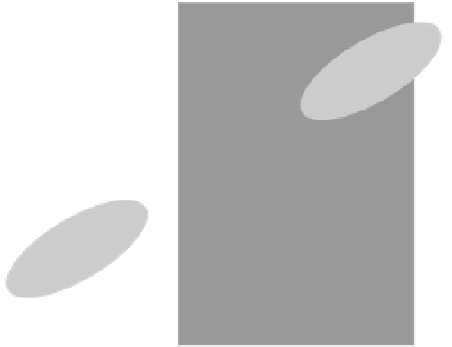Environmental Engineering Reference
In-Depth Information
original situation and to free up space and resources
for native blue mussels (
Mytilus edulis
), such oysters
should be removed by mechanical dredging. However,
considering the many negative side effects of mech-
anical dredging, the manual harvest of these oysters
would be more advisable. Perhaps, during particu-
lar times and tides, the general public should be
encouraged to take these oysters by hand and use
them for personal consumption. The concern that this
would rapidly lead to development of businesses,
generating a process towards commercial dependence
on the harvest of Pacific oysters, might be a case for
the appointment of professional oyster removers.
As we have seen, the direct and indirect effects
of bottom trawling and dredging on intertidal and
subtidal biota is a major concern (see section 13.2.1
and review in Dieter
et al.
2003). The probability that
damaged intertidal flat communities will recover has
not been determined, but is likely to be even lower
than the recovery of fish stocks after overfishing
(Hutchings 2000). There is little doubt that the time
course of any recovery will be a function of the
spatial scale on which the disturbance took place
(Lenihan & Micheli 2001; Fig. 13.6). The time con-
stant of general processes in the coastal zone are quite
tightly correlated with their specific spatial scale
(Fig. 13.6a). Given the extent to which intertidal flats
are dredged for cockles in the Dutch Wadden Sea, the
time to any recovery would be rather longer than a
year (see also Fig. 13.2; Piersma
et al.
2001). Using
data from the literature for minimum recovery times
after disturbance for intertidal and subtidal soft-
sediment habitats, a preliminary quantitative assessment
of time to the beginning of a recovery can be made
1000
(a)
System of isles
and gullies
100
Mussel and
oyster banks
10
Fig. 13.6
(a) Timescales of natural and
human-induced processes with different
spatial scales based on processes in the
Wadden Sea. (b) Relationship between the
minimal time to recovery (or some aspect of
it) and the spatial scale of the disturbance
studied. This graph includes observations on
natural and man-made disturbances, some
of which took place in the Wadden Sea. The
vertical shaded bar indicates the average
extent of the intertidal area affected by
cockle-dredging in 1998-2001 in the Dutch
Wadden Sea, the horizontal line indicates
the calculated time to recovery. The
return
time
is the time for mechanical cockle-
dredgers in the Dutch Wadden Sea to revisit
the same intertidal location, given random
site selection. It is given as a function of
the spatial extent of the fisheries and is
calculated relative to the total intertidal area
available. As the point where the return
time line crosses the vertical shaded bar is
much lower than the minimum recovery
time, the present cockle-dredging practice is
highly unsustainable. After Versteegh
et al.
(2004).
1
0.1
Small
animal
activities
MECHANICAL DREDGING
0.01
1m
2
100 m
2
1km
2
100 km
2
1ha
Spatial scale
1000
(b)
100
10
1
0.1
0.01
1m
2
100 m
2
1km
2
100 km
2
1ha
Disturbed area
























